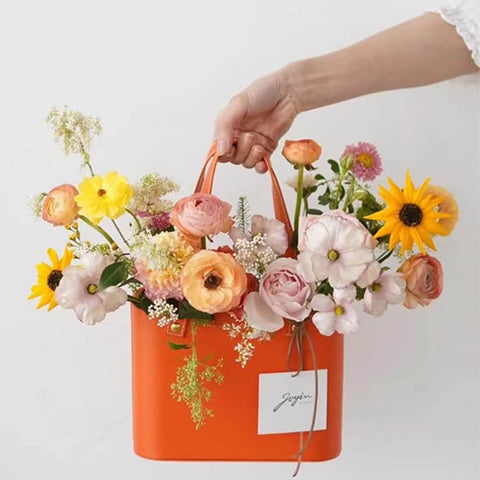A florist shares her favorite flower wrapping styles and techniques
As a florist, I love to use floral arrangements to bring people emotional experiences. In my long-term practice of flower arrangements, I have found that flower wrapping is a very important part of the process. The quality of wrapping directly affects the overall effect of the bouquet, so I spend a lot of effort to study and practice various flower wrapping techniques to continuously improve my skills. In this article, I would like to share my favorite flower wrapping styles and techniques, hoping to provide some inspiration and help for florists.
Flower wrapping styles
Minimalist style
Minimalist style is one of my favorite flower wrapping styles. It emphasizes simplicity, cleanliness, and tidiness, giving people a fresh and generous feeling. In minimalist style flower wrapping, common elements include simple colors such as white, gray, and black, and simple decorations such as ribbons, paper bags, and ropes. During the wrapping process, I usually choose one or several colors for collocation and do not pursue a rich color scheme in order to achieve a minimalist effect.
Natural style
Natural style is another flower wrapping style that I love. It emphasizes a natural, simple, and primitive effect, making people feel the beauty of nature. Common elements in natural style flower wrapping include natural materials such as hemp rope, burlap, branches, dried flowers, and some natural and elegant colors such as beige, dark green, and light pink. During the wrapping process, I try to maintain the original materials and shapes as much as possible, making the whole bouquet look natural and comfortable.
Romantic style
Romantic style is another flower wrapping style that I love. It emphasizes a romantic, warm, and sweet effect, giving people a romantic feeling. Common elements in romantic style flower wrapping include romantic colors such as pink, light purple, and some romantic decorations such as lace, bows, and beads. During the wrapping process, I pay attention to details to make the bouquet look more delicate and romantic.
Flower wrapping techniques
Choose appropriate packaging materials
Choosing appropriate packaging materials is very important when wrapping flowers. Generally, I choose high-quality materials such as vases, flowerpots, flower baskets, and bouquet wrapping paper to ensure the quality and beauty of the bouquet. When selecting packaging materials, I consider factors such as flower type, color, and size, to choose the most suitable packaging materials.
Create diverse packaging effects
Creating diverse packaging effects when wrapping flowers can make the bouquet more interesting and lively. I use different packaging techniques to create different effects, such as tying with ribbons or silk ribbons, wrapping with hemp rope or burlap, wrapping with colored paper, and decorating with dried flowers or branches. These techniques can make the bouquet look more unique and exquisite.
Pay attention to color collocation
Color collocation is an important factor to consider when wrapping flowers. I choose the most suitable colors for the flowers in the bouquet based on their color and characteristics. I try to create a harmonious and beautiful color scheme, making the bouquet look more beautiful and eye-catching.
Overall
These are some of my favorite flower wrapping styles and techniques. By incorporating these techniques into your own floral arrangements, you can create beautiful and unique bouquets that will leave a lasting impression on your customers.







